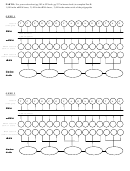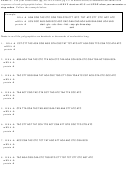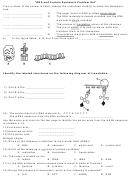Protein Synthesis Worksheet
ADVERTISEMENT
Name: ___________________________________ Date: _______________________ Period __________
PROTEIN SYNTHESIS WORKSHEET
PART A. Answer the following questions using your book and lecture notes:
1.
What are the three types of RNA involved in protein synthesis?
1)
2)
3)
2.
The first step of protein synthesis is __________________. This step occurs in the _________________ of the cell. During this
step the enzyme __________________________ makes a copy of a gene out of RNA. This is called a _________________ RNA
or mRNA. Some parts of mRNA called ______________ have to be cut out because they are not part of the code for the final
protein. This is called mRNA splicing. The remaining parts which do code for the protein being built are called _____________.
3.
The second step of protein synthesis is ___________________. This step occurs in the _________________ of the cell. During
this step the mRNA is used by a __________________ to build a polypeptide. Every three bases of the mRNA are called a
_____________ and code for one amino acid in the polypeptide.
4.
Ribosomes are made up of a large subunit called 50S and a small subunit called 30S. These subunits are made out of two types of
organic macromolecules: _____________________ and ______________________ RNA or rRNA.
5.
_____________ RNA or tRNA bring the amino acids to the _______________. One end of each tRNA is attached to an amino
acid and the other end is made up of three nucleotides, the bases of which form a triplet called an ________________. This region
recognizes its complementary sequence (codon) on the mRNA so that its amino acid can be added in the correct order.
6.
Once the polypeptide is completed, it must be modified (sometimes sections are cut out and rearranged). Once this is done and it
folds into its final shape, it is now called a _________________. This process occurs in the _____________________________.
7.
How does mRNA get out of the nucleus?
8.
What is the sequence of the start codon?
9.
What are the sequences of all of the stop codons?
10. How many different codons are there?
11. How many different amino acids are there?
12. There are more codons than there are amino acids. So what do the “extra” codons do?
13. Create a graphic organizer for protein synthesis in the space below. For example, you can draw out each step or create a flow chart.
ADVERTISEMENT
0 votes
Related Articles
Related forms
Related Categories
Parent category: Education
 1
1 2
2 3
3








